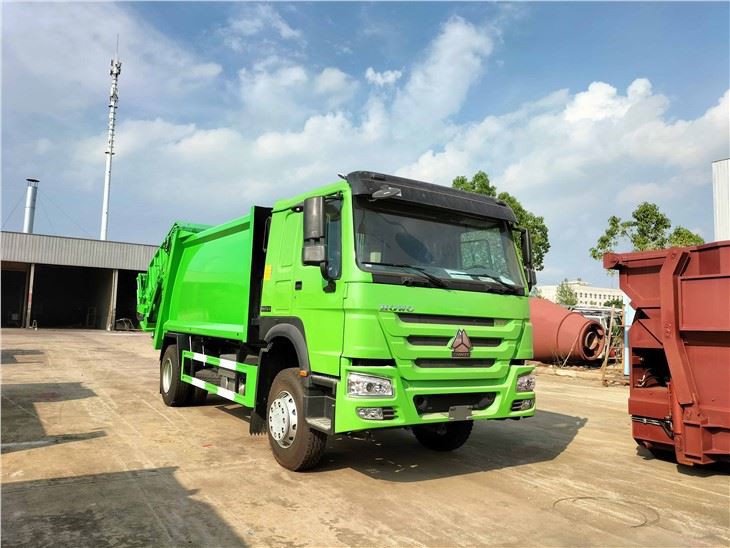In the world of transportation and logistics, understanding the types of vehicles used is crucial. Two terms often used interchangeably are “trailer” and “semi-trailer.” However, they serve different purposes and have unique designs. This article delves into the differences between trailers and semi-trailers, exploring their functions, benefits, applications, and more. Whether you are a logistics professional or just curious about these vehicles, this guide will provide you with a comprehensive understanding.
What is a Trailer?
A trailer is a non-motorized vehicle designed to be towed by a motor vehicle. Trailers come in various shapes and sizes, each meant for specific purposes.
Types of Trailers
There are several types of trailers, including:
- Utility Trailers: Used for transporting goods and materials, often without a front wall.
- Enclosed Trailers: Provide protection from the elements, often used for sensitive cargo.
- Boat Trailers: Designed specifically for transporting boats.
- Car Trailers: Used to carry vehicles, often seen in auto transport.
Advantages of Trailers
- Cost-Effective: Generally less expensive than semi-trailers.
- Flexibility: Available in various sizes and types for different transportation needs.
- Simplicity: Easier to maintain and handle in some cases.
What is a Semi-Trailer?
A semi-trailer is a type of trailer that is designed to be attached to a tractor unit or truck. Unlike traditional trailers, semi-trailers have wheels that only partially support them, with the front end resting on the truck’s fifth wheel.
Structure of Semi-Trailers
Semi-trailers typically consist of:
- Chassis: The main frame that supports the cargo.
- Platform: The flat area where goods are loaded.
- Axles: Usually, they have one or more axles at the rear.
Types of Semi-Trailers
Common types of semi-trailers include:
- Dry Van Semi-Trailers: Enclosed trailers meant for general freight.
- Refrigerated Semi-Trailers: Used for transporting perishable goods.
- Flatbed Semi-Trailers: Have no sides or roof, great for heavy or oversized loads.
- Tanker Semi-Trailers: Designed for transporting liquids.
Advantages of Semi-Trailers
- Higher Capacity: Can carry larger loads than traditional trailers.
- Versatility: Various types available to meet different freight needs.
- Stability: Better handling on the road due to design.
Key Differences Between Trailers and Semi-Trailers
1. Design and Structure
The main difference lies in their design. Trailers are standalone units, while semi-trailers rely on a tractor unit for support.
2. Towing Mechanism
Trailers are typically towed from the rear with a hitch, whereas semi-trailers connect to the truck’s fifth wheel located at the rear of the cab.
3. Weight Capacity
Semi-trailers generally have a higher weight capacity than traditional trailers, making them suitable for heavy-hauling jobs.
4. Maneuverability
Trailers can be easier for smaller vehicles to maneuver, while semi-trailers are designed for larger trucks and require specific driving skills.
5. Applications
Different applications define their use cases. Trailers might be used for lighter loads such as furniture or trailers, while semi-trailers are common for freight transport across states and countries.
Choosing Between a Trailer and a Semi-Trailer
If you are in the market for a towing solution, here are some factors to consider:
1. Load Type
Assess the type of cargo you intend to transport. For heavy goods, a semi-trailer is often the best choice.
2. Frequency of Use
If you plan to use the vehicle frequently, investing in a semi-trailer may be beneficial due to its durability.
3. Budget
Trailers generally cost less than semi-trailers, which may influence your decision if you are on a tight budget.
4. Transportation Routes
Consider your routes; for instance, urban areas may necessitate smaller trailers for easier navigation.
Practical Examples of Use
Below are contexts where each vehicle type excels:
| Vehicle Type | Use Case | Real-World Example |
|---|---|---|
| Trailer | Moving household goods | User renting a utility trailer for a weekend move. |
| Semi-Trailer | Shipping bulk goods | A logistics company transporting electronics across states. |
Maintenance Tips for Trailers and Semi-Trailers
1. Regular Inspections
Inspect both trailers and semi-trailers for wear and tear, including the brakes, lights, and tires.
2. Proper Storage
Store trailers in a dry place to avoid rust and corrosion, especially for semi-trailers that are more expensive.
3. Tire Care
Check tire pressure and tread regularly; poor tire maintenance can lead to accidents.
Frequently Asked Questions (FAQs)
1. What is the main purpose of a trailer?
The main purpose of a trailer is to transport goods and materials by being towed behind a vehicle.
2. Can a semi-trailer operate independently?
No, a semi-trailer cannot function without a tractor unit, as it relies on the truck for support.
3. How much weight can a semi-trailer carry?
Depending on its type and specifications, a semi-trailer can typically carry between 20,000 to 80,000 pounds.
4. Are there special licenses required for operating semi-trailers?
Yes, in many regions, a commercial driver’s license (CDL) is required to operate a vehicle towing a semi-trailer.
5. What types of cargo are best suited for trailers?
Trailers are best for lighter goods, recreational vehicles, and small equipment that do not exceed their weight capacity.
6. How often should I maintain my trailer or semi-trailer?
It’s advisable to perform regular maintenance checks every 3-6 months or before long trips to ensure safety and functionality.





